Reference
The Hero with a Thousand Faces: The Audemars Piguet Royal Oak
Reference
The Hero with a Thousand Faces: The Audemars Piguet Royal Oak
Let’s take a quick look at Ali’s life. He was born in Louisville, Kentucky, to a sign painter and a domestic helper. At the age of 12, he has his bicycle stolen and fortuitously takes up boxing. He wins an Olympic Gold medal but throws it in the river because of being denied service at a “white only” restaurant. In 1964, against all odds, he wins the heavyweight championship, despite his opponent Sonny Liston trying to blind him with ointment applied to his gloves. He finds a mentor in American religious leader Elijah Muhammad and converts to Islam. Then three years later, at the peak of his career and at the height of his ability, he is banned from boxing for being a conscientious objector to the Vietnam War. The three and a half years he is not allowed to fight represent the period of his greatest fitness — time he will never get back. In 1971, the ban is overturned. But his return to the ring is marred by his first professional defeat and the belief is that his career is over. He is at a low point in his life. But in 1974, at the age of 32 and considered largely washed up by many, he defeats the most feared and dominating fighter of the era, George Foreman, to once again become champion. The way his story perfectly fits Campbell’s monomyth is astounding. Ultimately, the takeaway is that every hero in human history is essentially the same archetypal entity recast in many guises over and over again. Their different appearances are simply the product of the historical and cultural contexts of their time to make them relatable to us.

Muhammad Ali & Arnold Schwarzenegger at Audemars Piguet's Time To Give Celebrity Watch Auction For Charity, held at Christie's Auction House in New York City, 2000. (Image: Nick Elgar/ImageDirect)
Everlasting Elegance
The story of the Royal Oak “Jumbo” Extra-Thin Reference 15202 is, to me, inextricably linked with the story of Audemars Piguet’s CEO François-Henry Bennahmias. If not for Bennahmias’ decision to rebuild the Royal Oak collection and reinforce the position of the Jumbo within the collection in 2012, we would not be seeing the current insane success of the luxury watch market. Why? Because of all categories — excluding Rolex sports models, which comprise a different world unto themselves — it is the integrated bracelet sports chic watch that is the hottest genre of high-end timepieces around. This was a category created in 1972 by Audemars Piguet and the Royal Oak, and made once again the focus of the brand 40 years later in 2012.
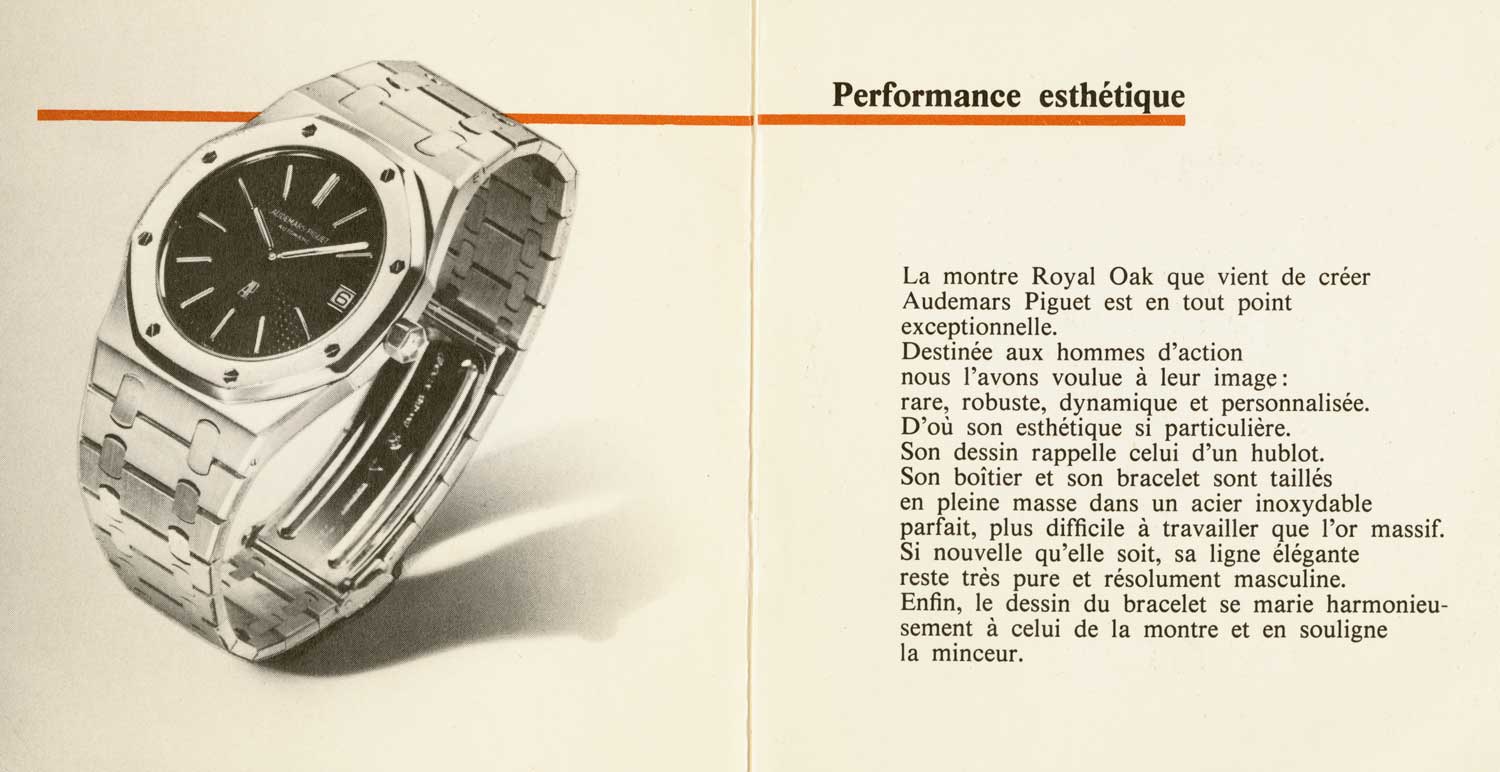
An original Royal Oak leaflet from 1972

François-Henry Bennahmias, CEO of Audemars Piguet

The Royal Oak Extra-Thin "Jumbo" ref. 15202 reinforces the longevity of Gérald Genta’s original design regardless of case material or dial color
Audemars Piguet collector and 2021 Geneva Grand Prix d’Horlogerie (GPHG) jury member Ahmed “Shary” Rahman declares, “If you were going to give a prize to the greatest CEO of the modern watch era, I would say many people would immediately point to François-Henry Bennahmias. Because he took the Royal Oak and made it the single most desired watch on the planet. He also made the entire family of watches, such as the ceramic perpetual calendars or the ultra-thin perpetuals, or the double balance wheel and even the 41mm tourbillons, so vibrant and relevant with incredible designs and strong material innovation.”

Ahmed Rahman (a.k.a. Shary), @time_mechanic

Jay-Z

Pharrell Williams

Royal Oak Extra-Thin "Jumbo" ref. 15202BC

Austen Chu

For a long time, the outgoing cal. 2121 that powered the original 5402 stood as the thinnest full rotor automatic movement with date indication, measuring 3.05mm high. Notably, it featured a beryllium ring integrated into the rotor, which rides on ruby rollers

In marking the 50th anniversary of the Royal Oak, Audemars Piguet introduced the ref. 16202, a faithful remake equipped with a new and improved movement
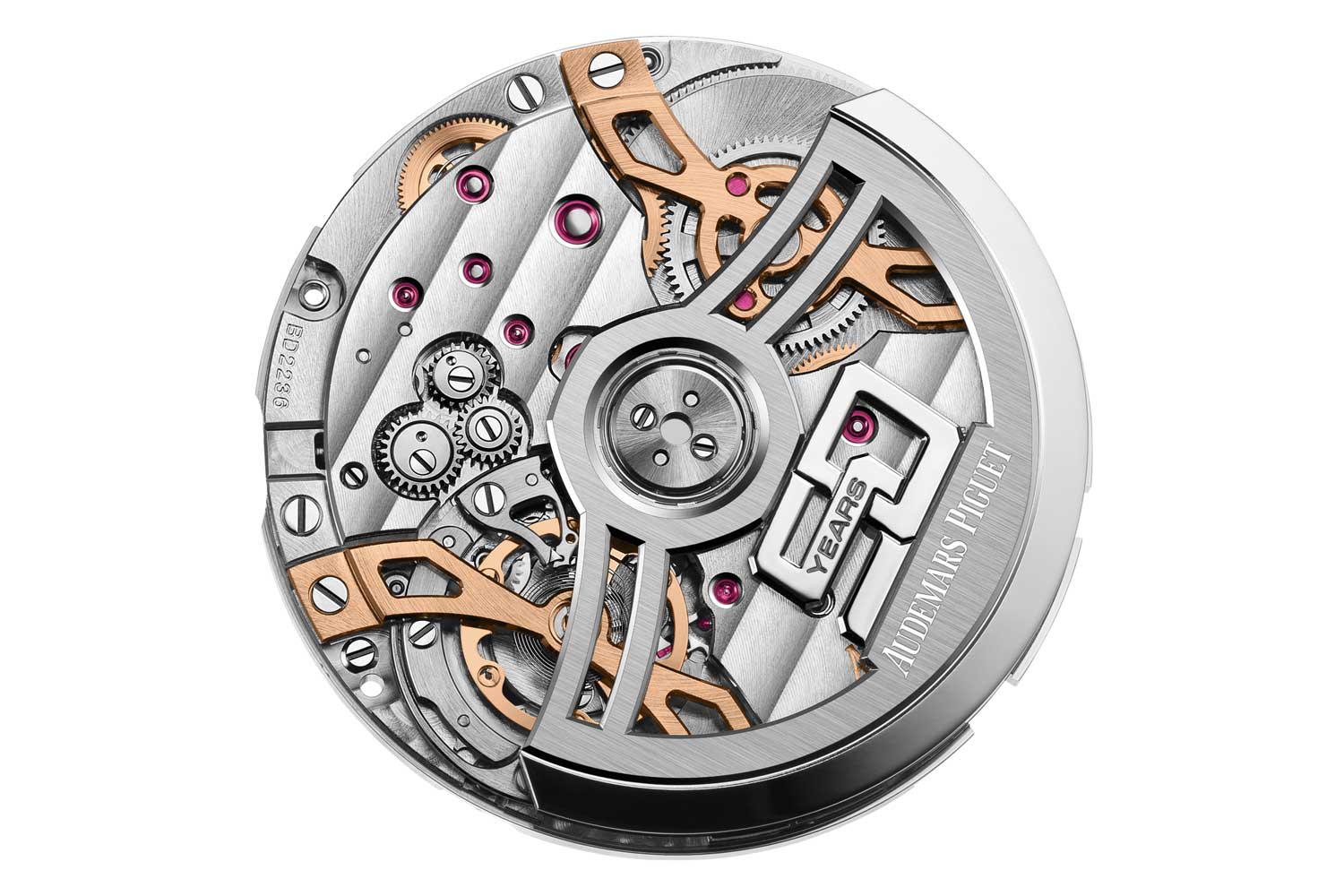
The impressively constructed cal. 7121 replaces the cal. 2121, which has powered all previous generations of the “Jumbo”

Straddling both performance and aesthetics in equal measure, the cal. 7121 offers a longer power reserve and a higher beat rate while being slim, beautifully designed with two symmetrical bridges for the barrel and balance respectively.
Mid-Sized Masterpieces
One fascinating aspect of the Royal Oak’s story is that the original Jumbo at a diameter of 39mm that belied an astoundingly elegant 7.2mm in thickness was, as its sobriquet implied, somewhat polarizing for its size. And while after a full half century of existence history has affirmed the 39mm watch as perfect in proportion, in the context of the late ’70s and well through the ’90s, the prevailing taste then was for a smaller sized watch. Fortunately, Audemars Piguet had one Jacqueline Dimier as creative director. In 1976, she went against stereotypes and offered a new take with the Royal Oak II reference 8638. It measured a mere 29mm in diameter and was the first Royal Oak for women. In 1977, she created the Royal Oak III reference 4100, a 35mm in diameter watch that took the stunning formed art iconography of the 5402 and reconceptualized it in a decidedly smaller package. Michael Friedman explains, “The 4100 and the subsequent ‘mid-sized’ Royal Oak models represent an amazing design achievement in that they are in every way a Royal Oak. They tap into and express the powerful formed art blueprint envisioned by Gérald Genta, but now in a smaller and more wearable version for a wide variety of wrists. I’ve always loved these watches. And Jacqueline Dimier’s work with them is also a showcase for the extraordinary creativity of Audemars Piguet at the time, when it came to material innovation and audacity in color.”

Measuring 35mm wide, the Royal Oak III ref. 4100 was a masterful exercise in downsizing while keeping the design codes of the legendary original intact
“The important thing about the 4100 is that it showed how responsive Audemars Piguet was to the prevailing cultural tastes, and this watch brought the magic and appeal of the incredible Royal Oak to a much broader audience,” says Friedman. “There is a great parallel between this and the Royal Oak Offshore, which would push the Royal Oak’s iconography in a completely different direction. Both these models show that Audemars Piguet has always been on the pulse of understanding the prevailing zeitgeist of any era.”
Bennahmias agrees, “I want to be clear that this is not Audemars Piguet responding to trend. Quite the opposite, it is Audemars Piguet’s courage and fearlessness to take the leader’s position when it comes to innovation.”
Rahman adds, “What is clear is that if we can agree that the integrated bracelet sports watch is the most popular kind of watch today, then the entire industry would not be where it is today or seeing the levels of incredible success now, were it not for Audemars Piguet creating this genre in 1972 with the Royal Oak. When I look at owning this watch, I think of it as possessing the very original. The Alpha. The Prima. The one that started it all.”
Just to show you how creative Audemars Piguet was when it came to the Royal Oak mid-sized models, the watches were launched in rapid succession, with the 4332 in 1983, the 56023 with a quartz movement in 1982, the 25572 day-date model in 1983, the magnificent 25594 day-date with moon phase model in 1984, the 14486 with screw-down crown in 1986, and the stunning 14700 debuted in 1990. Then in 1992, Audemars Piguet launched what has to be considered one of modern watchmaking’s most seminal and iconic timepieces, the legendary 14790 mid-sized Royal Oak that measures 36mm in diameter. This model was so successful that it ran from 1992 to 2005 for an amazing 13 years. The model was made in at least 10 different materials and many varied dial combinations. It is this watch that would be made in an amazing steel and tantalum version, and that would include chromatically resplendent dial variations such as the yellow, red and Yves Klein blue versions which were showcased in Phillips’ thematic Royal Oak 50th Auction that took place on May 6, 2022. It is clear from the results posted by these watches that the collectibility of mid-sized Royal Oak models is experiencing a tremendous rise.
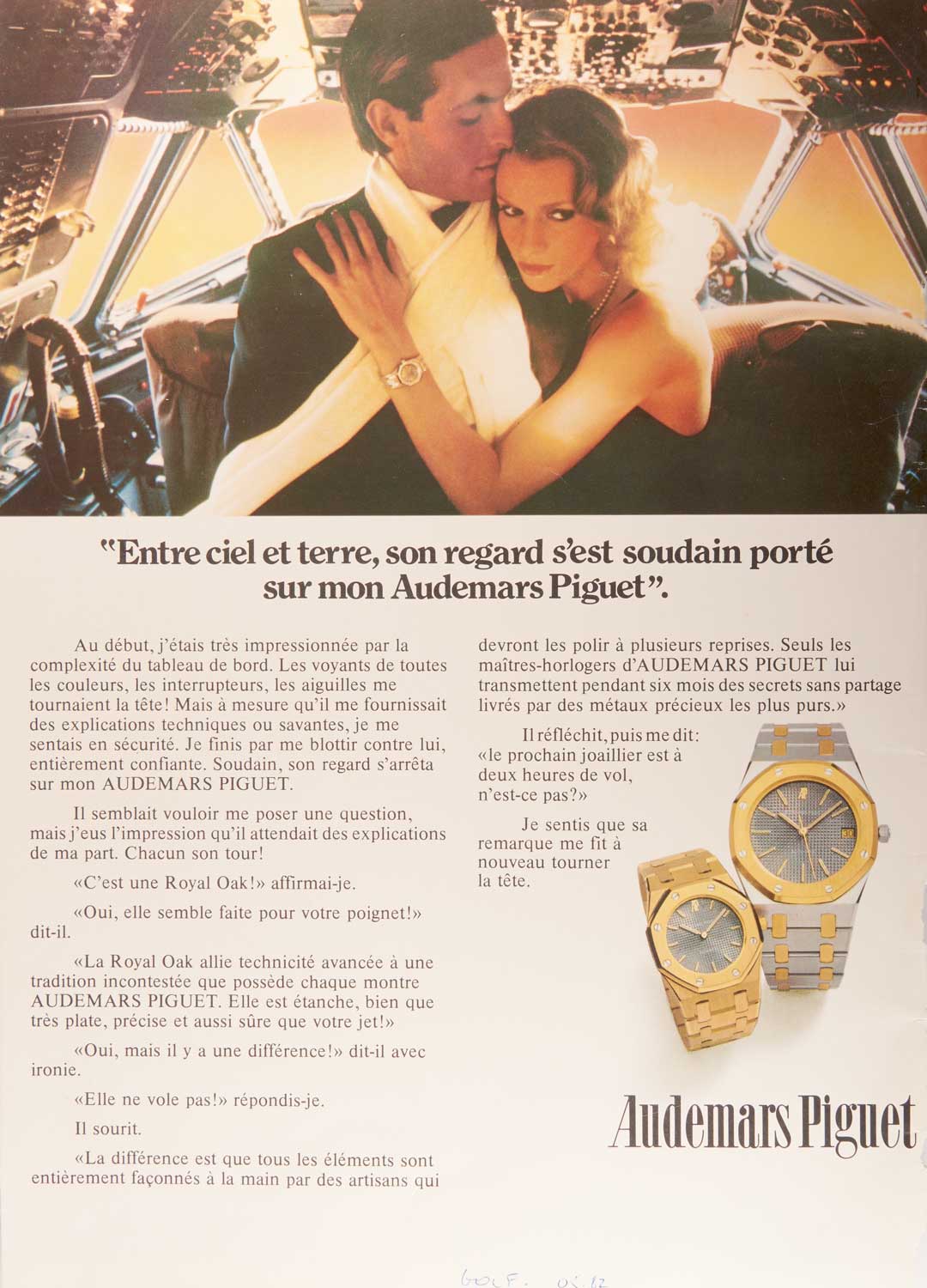
A 1982 advertisement of the mid-sized Royal Oaks targeted at women

The 36mm Royal Oak ref. 14700 launched in 1990 and its successor, the ref. 14790 that remained in the catalogue for 13 years from 1992 to 2005
Audemars Piguet continued the mid-sized tradition with the reference 15450, which is 37mm in diameter by 9.8mm in thickness. Housed inside was Audemars Piguet’s in-house caliber 3120, an automatic center seconds movement with a 3Hz vibrational speed and 60 hours of power reserve. It was introduced along with its 41mm sibling, the 15400, in 2012. While the larger watch has been since updated to the 15500 in 2019, the 15450’s endurance speaks to its long lasting appeal. It is finally replaced this year with the reference 15550, which is 8.9mm in thickness and powered by the new self-winding movement, caliber 5900, which beats at 4Hz with 60 hours of power reserve.
The launch of the seminal references 15400 and 15450 came with the introduction of the latest and now legendary 15202. As that watch was 39mm, it made sense that Audemars Piguet would want to further differentiate the Royal Oak models featuring its excellent center seconds and quick-set date, and powered by its in-house caliber 3120. As such, they discontinued the 39mm 15300 and replaced it with a 41mm and a 37mm model. The significance of the latter was that it marked the re-introduction of the mid-sized Royal Oak. Interestingly, a decade later, we now see prevailing tastes return to more classically proportioned timepieces, after a heady dalliance with oversized cases in the new millennium’s first decade. As a result, the 15450 has found immense appeal with a new generation of customers. One important design flourish was the return of the double baton applied indexes at 12 o’clock. While the 14790 and even the 15300 had the AP logo at 12, the double baton indexes bring the mid-sized model in alignment with the dial of the original Royal Oak as well as the resplendent 15202 and now the 16202.

Yellow gold executions of the 37mm Royal Oak ref. 15450 and 33mm ref. 67651
A Case for Complications
1997 was a momentous year for the Royal Oak. The model celebrated its 25th anniversary with several extraordinary complicated timepieces, including, for the very first time, a tourbillon as well as the first Royal Oak Grande Complication featuring a perpetual calendar, minute repeater and split seconds chronograph. The Grande Complication was also a celebration for Audemars Piguet’s growing dominance in the field of high complications. One huge asset for Audemars Piguet regarding this was the acquisition of a 52 percent stake in Renaud & Papi in 1992, a high complications dream factory founded by genius watchmakers Giulio Papi and Dominique Renaud, who met early on in their careers when working for Audemars Piguet. Today, Renaud & Papi is wholly owned by Audemars Piguet. But in the context of the late ’80s and early ’90s, it was this pair of watchmakers that was driving the resurgence in high complications. Amongst the most famous specializations of Giulio Papi is a mastery of chiming complications. Together with the manufacture, he created the only third known grande and petite sonnerie wristwatch movement in existence. Today, Giulo continues to develop movements for other brands and is in fact responsible for many of the most decade-defining movements in watchmaking. He notably expressed his love for rattrapantes with two of Richard Mille’s most seminal watches, the RM 004 split seconds chronograph and the RM 008 — essentially the same watch but with the addition of a tourbillon.
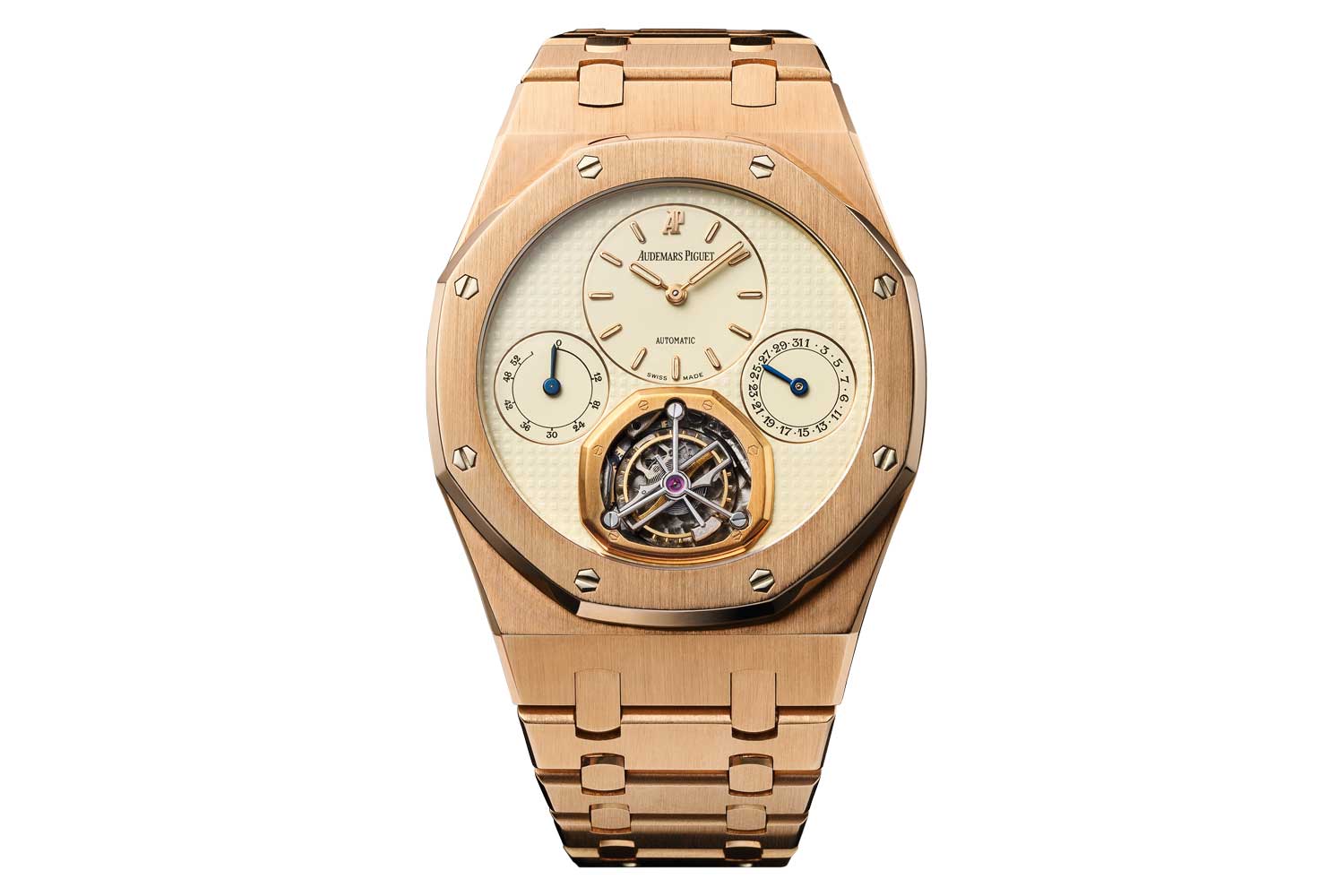
Launched in 1997 to mark the 25th anniversary of the Royal Oak, the ref. 25831 was the first Royal Oak Tourbillon and the only Royal Oak with the crown located on the caseback

The 1997 Royal Oak Grand Complication 25865 built by Audemars Piguet Renaud & Papi

The 2009 Royal Oak Grande Complication Openworked ref. 26065

The groundbreaking Royal Oak Minute Repeater Supersonnerie ref. 26591 incorporates a patented technology to enhance the acoustics of the repeater

A caseback with cut-outs on its periphery sits over the soundboard, allowing sound to escape the case

The 2015 Royal Oak Concept RD#1 that introduced the Supersonnerie
For Bennahmias, that’s the beauty of this model. “It’s so easy to wear and so discreet only you know you have the ultimate minute repeater on your wrist, and you get to choose when you want to activate it, sharing the experience with others you deem worthy or keeping it for yourself if you prefer. The thing about a Royal Oak complication is that it is always elegant.”
Wonderful Whirlwinds
It seemed like a matter of predestination that the Royal Oak case would eventually become synonymous with the tourbillon. After all, it was Audemars Piguet that would first introduce the world to a serially produced wristwatch tourbillon in 1986. This watch was, from a technical perspective, one of the most significant achievements in modern horology. It was, at the time of its creation, the world’s smallest and thinnest self-winding tourbillon watch. It was engineered in an absolutely revolutionary way with the caseback of the watch acting as the movement’s mainplate to aid in slimness. For this reason, the movement’s jewels are visible on the caseback. It was the first tourbillon to use a titanium cage. Its winding system used a special hammer shaped mass. Eleven years later, the tourbillon complication made its way to the iconic Royal Oak and it was as if this complication and this case shape were created with each other in mind, such was the perfection of their synergy. Friedman explains, “1997 was an incredible year for Audemars Piguet. I was working as the curator of the National Watch & Clock Museum in Columbia, Pennsylvania, at the time, so it also happens to be the year that I became aware and interested in Audemars Piguet in ‘real time,’ not just through the historical lens! 1997 was highlighted by the introduction of the first Royal Oak Tourbillon (25831), which remains the only Royal Oak with the winding crown on the back of the watch. This amazing timepiece would set the stage for two of our most important watches today. The first is the stunning 41mm Tourbillon Extra-Thin introduced in 2012. And the second is, of course, the incredible Selfwinding Flying Tourbillon Extra-Thin RD#3 launched in 2022.”
A fitting accomplishment to mark the 50th anniversary of the Royal Oak, the new automatic flying tourbillon occupies exactly the same dimensions as its time and date sibling, the 16202, at 39mm in diameter and 8.1mm in thickness. What is clear is that the RD#3 was developed at the same time Audemars Piguet designed the caliber 7121. Its format is essentially the same and it features the same distinct hand finished and beveled bridge for the barrel. Look at the tourbillon and you’ll see the same signature uniquely shaped free sprung balance wheel that integrates the six small circular masses used to regulate it, into its aerodynamically shaped rim. As a subtle but important design detail, the balance wheel here matches the color of the steel case as opposed to the rose gold colored model in the 16202. To further aid in slimness, the tourbillon uses a flat hairspring. Also, instead of the third wheel driving the cage’s pinion, here to save height, the cage is powered by the side, which Audemars Piguet calls its “peripheral drive.” What is even more amazing is that the RD#3 flying tourbillon caliber also appears in a 37mm mid-sized Royal Oak model, released in September.
The RD#3 would not have been possible without the launch of the Royal Oak Tourbillon Extra-Thin, introduced in celebration of the Royal Oak’s 40th anniversary and which became as iconic as the original 5402. Indeed, one could imagine the watch being conceptualized at the time of the original, so perfectly has the tourbillon been integrated into the Royal Oak’s formed art design. This has everything to do with the sensitivity in terms of the placement of the tourbillon’s massive aperture that gives you a front row seat to this stunning mechanism’s kinetic performance art. The aperture, unlike that of other tourbillons, is significantly larger than the diameter of the tourbillon cage to create a sense of lightness and transparency around this device. Notice how tantalizingly close this opening comes to the cannon pinion where the Royal Oak’s famous baton shaped hands are mounted. As a sort of optical illusion, the tourbillon bridge covers the rim of the third wheel which drives the pinion of the cage, which leaves you scratching your head wondering how it receives power. At the same time, there is a wonderful restraint to the design, an almost Zen-like demeanor that is belied by the watch’s immense technical firepower. Rahman elaborates, “The tourbillon version of the Royal Oak to me epitomizes complicated elegance by only revealing what is needed to show you what’s going on inside it.” But if you look closely, you’ll see it is rife with well thought out details. The tourbillon bridge, which features slotted screws as a clin d’œil to the famous visible bezel screws, retains the tourbillon cage which rotates once on its own axis every minute, averaging the errors caused by gravity on the oscillator, hairspring and escapement.

The Royal Oak Selfwinding Flying Tourbillon Extra-Thin RD#3 ref. 26670

It is powered by the remarkable cal. 2968 built specifically for this model, allowing the case to maintain the same dimensions as the ref. 15202 and 16202

To reduce the overall height of the tourbillon, the cage is driven by a wheel on its periphery rather than the conventional pinion beneath the cage

Royal Oak Tourbillon Extra-Thin in black ceramic ref. 26522CE
This set the stage for the stunning 41mm Tapisserie Evolutive Tourbillon models that would arrive in 2020 and 2021, including reference 26532IC. One of the most beautiful watches ever created by the Le Brassus based Manufacture, this timepiece combined a titanium case, white gold bezel set with baguette-cut emeralds with an emerald green dial with radiating guilloché pattern. The effect was a visual opera of complexity and bombast that was belied by timeless iconography and ethereal finishing. What is important to understand is that this watch featured both a flying tourbillon, without an upper bridge and with all the weight of the cage supported by its pinion, as well as an automatic winding system, which meant that the Royal Oak now featured both a sublime manual wind tourbillon that measured 8.95mm in thickness cased up and a self-winding model with a case height of 10.7mm. Both models are water resistant to 50 meters. The automatic winding flying tourbillon movement caliber 2950 was initially introduced in the Code 11.59 by Audemars Piguet Selfwinding Flying Tourbillon in 2019 before it made its way into the Royal Oak in 2020. Its appearance was, in fact, a subtle clue as to what the brand would have in store for us in 2022.

Royal Oak Tourbillon Extra-Thin ref. 26532IC which combines a titanium case and a white gold bezel set with baguette-cut emeralds with an emerald green dial
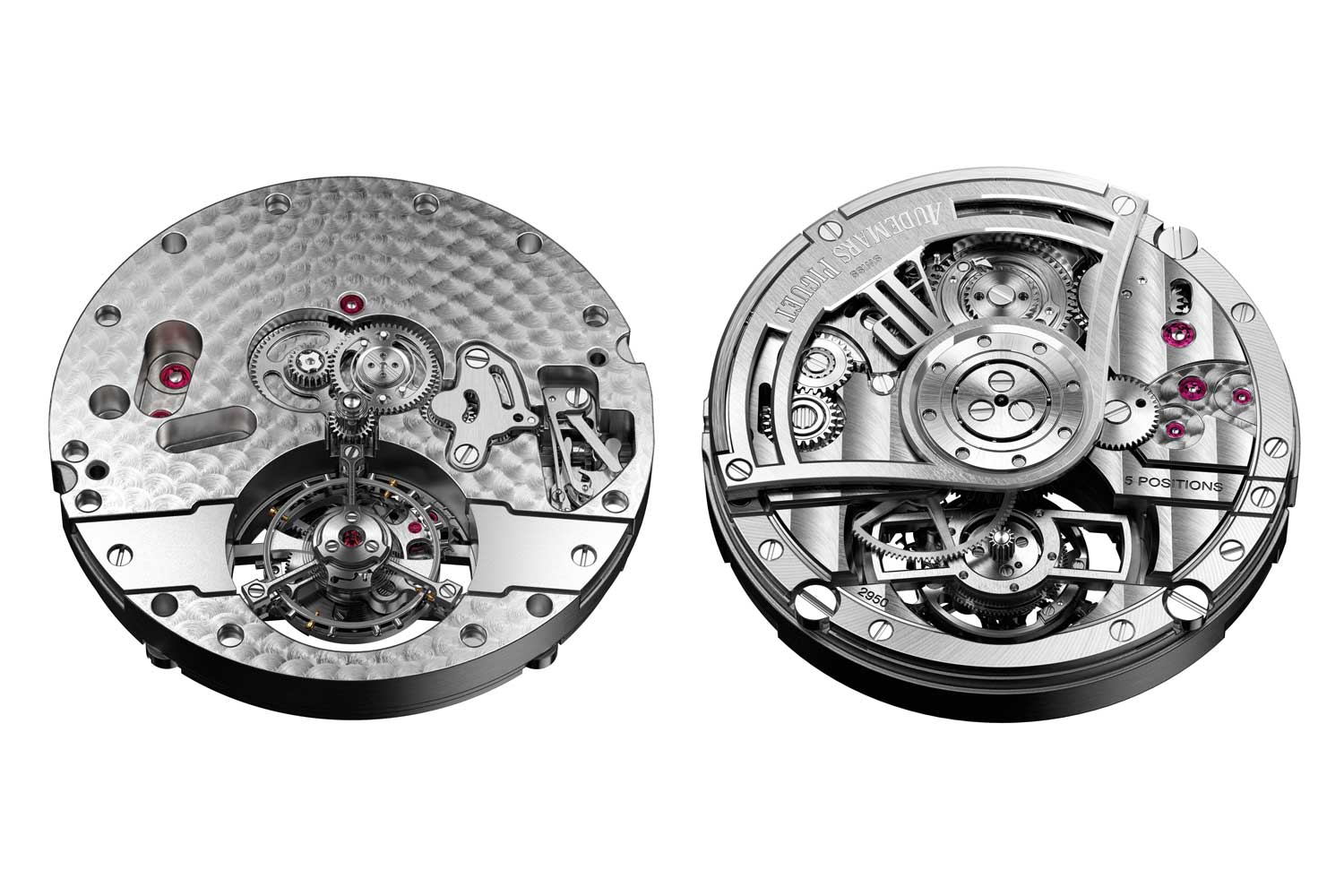
Front and back view of the caliber 2950 — note that the motion works are located above the central axis of the movement, ensuring that there are no wheels obstructing the view of the tourbillon cage at six o’clock
Writing Time
It’s funny because when you think of the Royal Oak, the chronograph is often the last model that comes to mind. Yet to me, it represents one of the very best gentleman’s time-writers in existence. The Royal Oak Chronograph was launched in 1997 as part of the celebration of the Royal Oak’s 25th anniversary. The stroke of design genius related to the model is as follows: Try to imagine two pushers randomly added to the famous iconography of the Royal Oak. It just doesn’t work, right? The stroke of brilliance here was to mirror the shape of the Royal Oak’s famous bezel and unify the design. Since 1997, the Royal Oak Chronograph has been made in myriad configurations. It initially used a Frédéric Piguet ultra-thin column wheel, vertical clutch movement and was updated with an in-house movement Calibre 4401 in 2021. Chronograph references also are available in 41mm and 38mm case sizes.

The very first Royal Oak Chronograph ref. 25860, released in 1997

The Royal Oak Chronograph ref. 26240, which is equipped with the in-house automatic cal. 4401
High Concept
When I talk about Audemars Piguet having the fearlessness to tap into the zeitgeist and create watches more daring than the rest of the industry, I often use two references as proof positive. The first is the Royal Oak Offshore from 1993 designed by Emmanuel Gueit that looks like a Royal Oak injected with human growth hormone and chained to a weight pile until it utterly transformed into a shimmering symbol of profoundly handsome aggressive menace. The significance of the Offshore is that it was the luxury watch world’s first truly oversized sports watch, and set the stage for the following decade in which every single brand would follow the path it blazed. You might notice its conspicuous absence from this piece and that’s because it will be the subject of its own totemic article to be released later, such is my affection for the watch affectionately known as “The Beast.”

Emmanuel Gueit’s take on an icon, the Royal Oak Offshore (ref. 25721ST) broke the size barrier with its 42mm case in 1993, becoming the first truly oversized luxury sports watch. Presented with a blue Tapisserie dial to echo the original Royal Oak, it was the first of the Offshore line

The 2002 Royal Oak Concept with its unique shock-absorbing tourbillon bridge, a linear power reserve indicator and a dynamograph to indicate the level of torque in the mainspring
The Concept continued to showcase Audemars Piguet’s most cutting-edge technology. In 2008, we witnessed the birth of the Concept Carbon with a forged carbon fiber case and ceramic bezel. In 2011, we have the release of the Concept Tourbillon GMT. In 2015, Audemars Piguet launched one of the most innovative watches it’s ever created. Austen Chu believes that the only reason the Audemars Piguet Royal Oak Concept Laptimer Michael Schumacher is not more sought after is that 99 percent of the people who saw it still don’t understand how it works. The Laptimer is the first chronograph that allows alternative laptiming recording as per Michael Schumacher’s request in the early 2010s. Which means that it has two chronograph hands running together. When you press the button at nine o’clock, one hand stops and the other jumps back to zero and starts recording a new lap. If you press the button again, the hands switch and the new one stops and the previously frozen one jumps back and starts recording a new lap.

The 2015 Royal Oak Concept Laptimer Michael Schumacher was the very first chronograph that could measure two alternating consecutive lap timings.

With its exposed rubber gaskets and rubber-covered chronograph pushers, the Offshore established an unheard-of precedent for experimentation in luxury watches, ultimately growing to become one of the most influential watches in contemporary watchmaking
Two Hearts Beat as One
Perhaps of all the watches created under his able stewardship of AP, it is the Royal Oak Double Balance Wheel Openworked that makes François-Henry Bennahmias smile the most. He recalls with a laugh, “The Double Balance Wheel Openworked was a lot like what happened in 1978, when a trio at Audemars Piguet named Rochat, Golay and Berney created the world’s thinnest automatic perpetual calendar. They presented it to the boss at the time, Georges Golay. He put it into production and it became one of the most successful models in watch history. So, similarly, I was in a meeting one day and I noticed a watch on someone’s wrist. I said, ‘Let me see what you’re wearing.’ He smiled nervously and replied, ‘Boss, actually this is something we wanted to discuss with you.’ I asked, ‘Who is we?’ It turned out that there were 10 people at the Manufacture wearing this watch. I looked at it and immediately recognized that they had created a successor to our 39mm automatic openworked watch, now at 41mm with our in-house movement, the 3120. But then I noticed something very interesting, that the watch had two balance wheels, each with its own hairspring mounted in opposing directions. This was to give the watch a higher level of chronometric performance, he explained. I said to him, ‘So you went ahead and created a watch that I didn’t ask for, the marketing team didn’t ask for, the production team didn’t ask for?’ He nodded his head nervously waiting for me to reply. I asked him, ‘Can we make these in series, not just a few pieces a year?’ He nodded. I asked him, ‘Is it reliable?’ He nodded his head. I asked, ‘Does it bring some real performance?’ He nodded his head. I told him, ‘OK, we are going to put this in production.’”
Audemars Piguet’s experimentation with two hairsprings poised in opposite directions to aid in concentric breathing goes all the way back to the Audemars Piguet escapement. It was used in combination with a 6Hz direct impulse escapement – inspired by Robert Robin’s escapement from 1791 – to excellent effect in watches such as the Jules Audemars Chronometer with AP Escapement. Friedman explains, “Those watches were made in small quantities and a large part of the work was focused on regulating the balance wheel because of these two hairsprings. But when our team started working on the Double Balance Wheel, it dawned on them that it would be more straightforward to regulate two independent balance wheels each with their own spirals. They decided to place this innovation inside the openworked version of the caliber 3120, which is an extremely reliable automatic movement. They were immediately impressed with the results and the Double Balance Wheel was born. What’s great was that because of the 3120, we were able to make this watch in both the 41mm size but also in the 37mm size, which opens up a whole new world of mid-sized complications for the Royal Oak. We’ve made the watch in many incredible versions.”
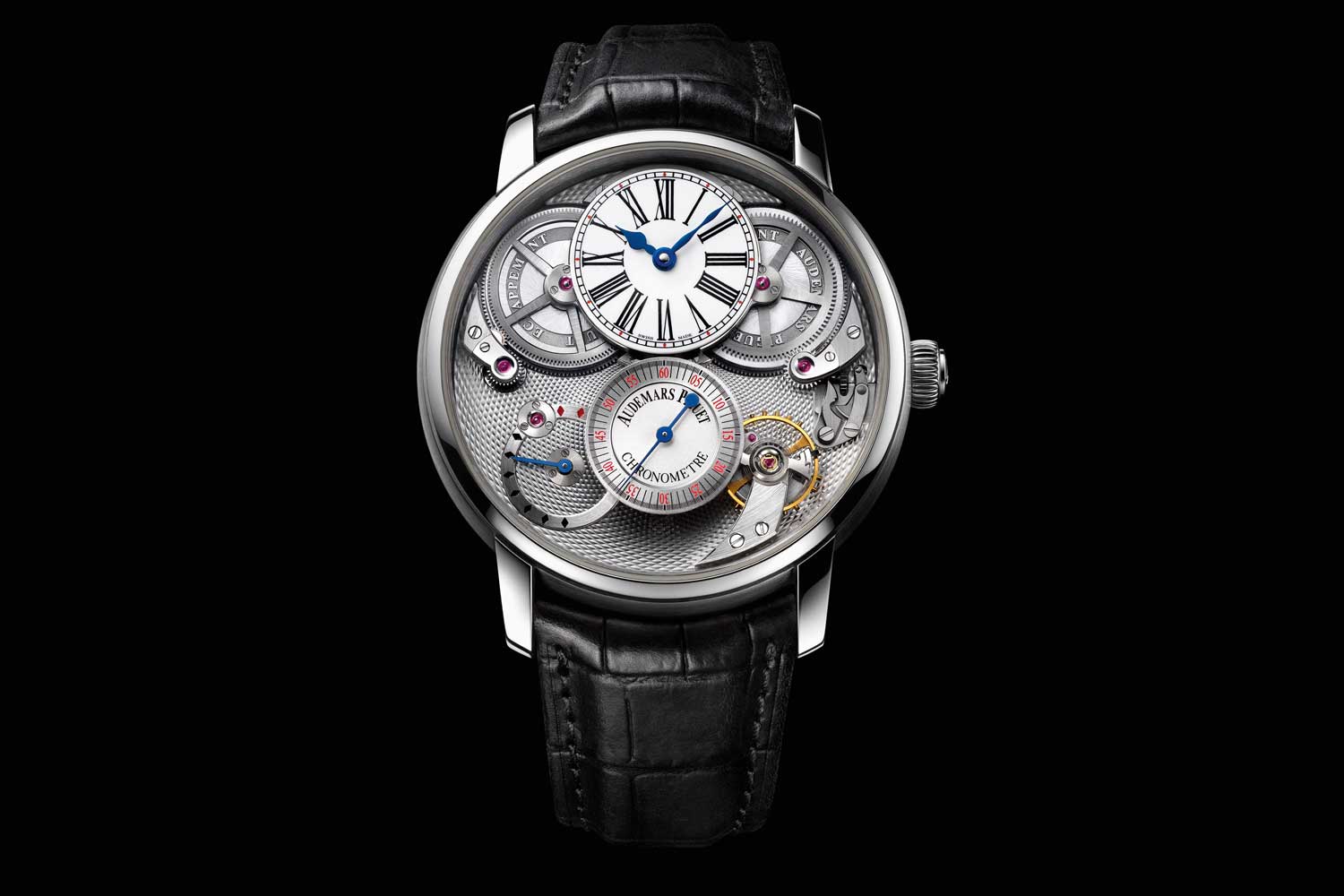
The 2009 Jules Audemars Chronometer offers a rare package of a high frequency of 6Hz and a long power reserve of 90 hours
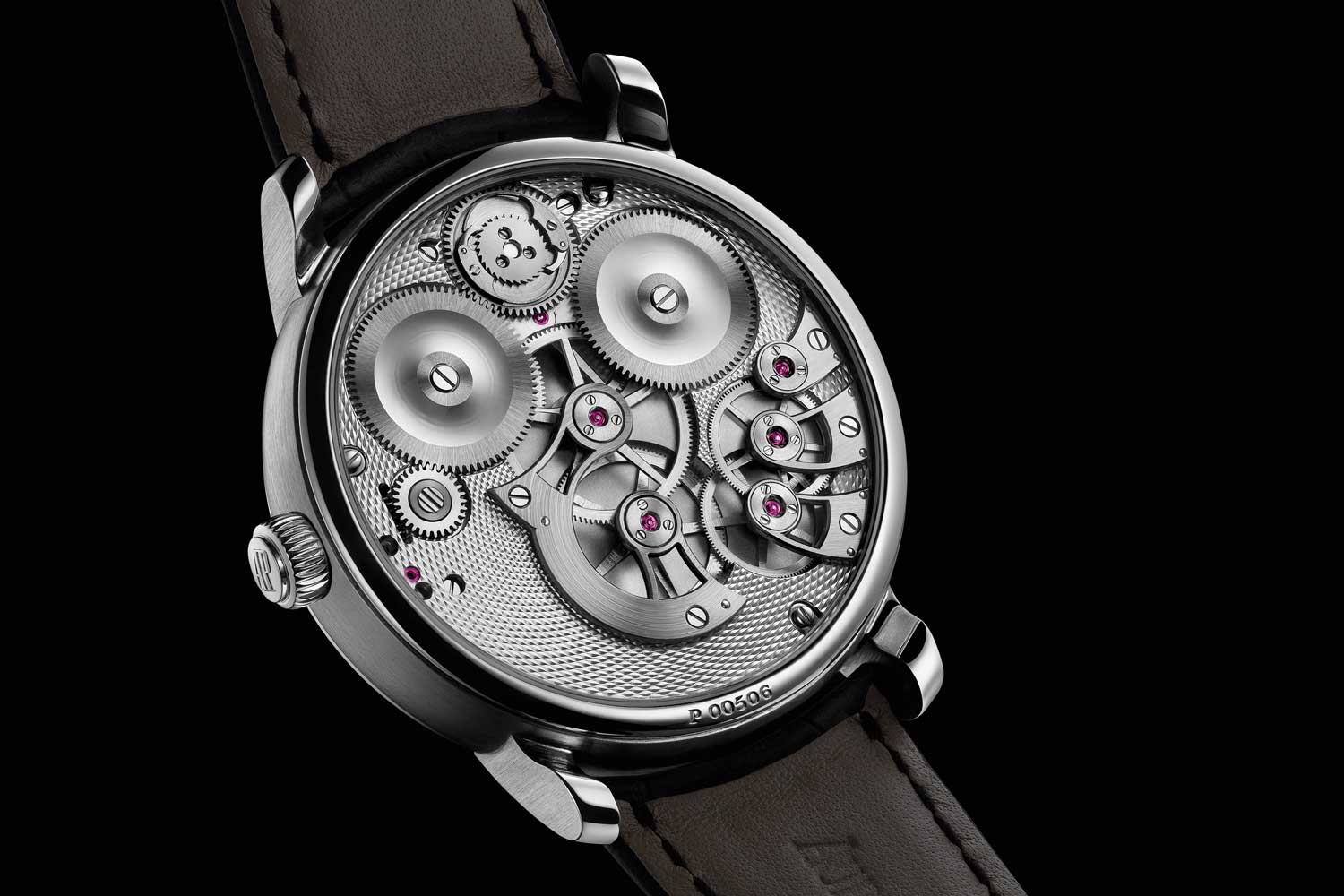
This is accomplished with the highly efficient, direct-impulse Audemars Piguet escapement as well as double barrels installed in a parallel configuration visible on the caseback

The Royal Oak Double Balance Wheel Openworked, launched in 2016, incorporates one of the most mechanically exotic movements in a classic Royal Oak case
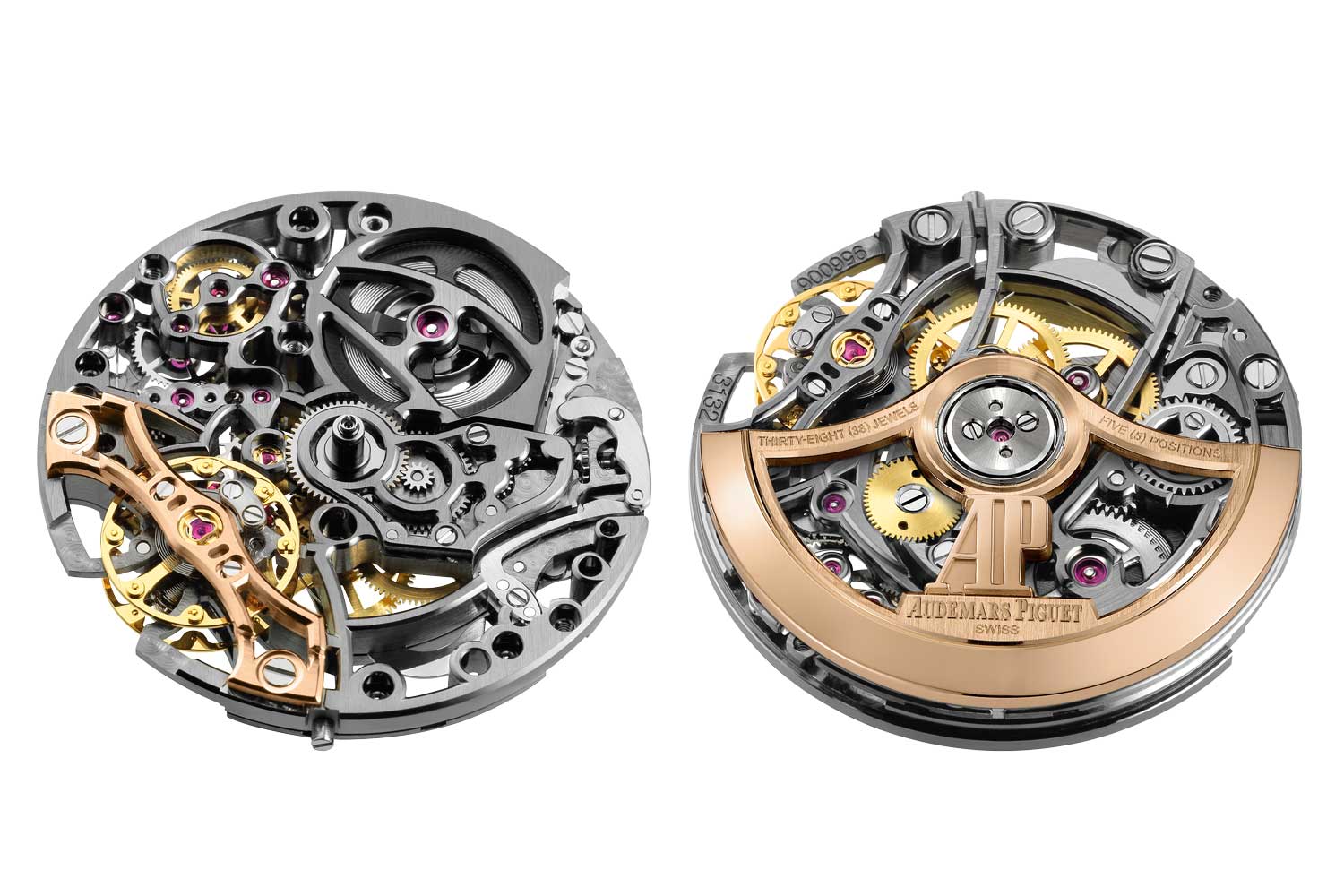
Front and back views of the caliber 3132. The benefit of having two balance wheels mounted on the same staff is greater inertia, resulting in greater stability in the face of shocks. At the same time, the hairsprings wind and unwind inversely to each other, cancelling out rate variations
Perpetually Yours
When I wrote my story on Audemars Piguet’s perpetual calendars, I described the brand that represents high watchmaking’s “holy trinity” in the following way: Patek Philippe is the golden child, the Fulbright scholar, Vacheron Constantin is the fiercely intellectual virtuoso, but Audemars Piguet is the wild child, the fearless one, the rebel but the most magnetic of the three. I’ll put it another way: Think about a guy wearing any perpetual calendar from Patek or Vacheron. You would think they are guided by inexorably good taste, correct? But now think of the guy wearing a Royal Oak Perpetual Calendar. He is hands down the coolest guy in the room. Right? Such is the dynamic appeal of the Royal Oak Perpetual Calendar that it makes even the most intellectual complications a symbol for unyielding desirability and swagger.
But first, let’s go back to 1984, when the meeting of the world’s thinnest automatic perpetual calendar and the world’s first integrated bracelet sports chic watch seemed as predestined as that of Romeo and Juliet. The resulting watch was a masterpiece of design and ergonomics. At 39mm in diameter, it was effortless to wear. Moreover, the idea of a complication in a watch you could wear lounging by the swimming pool was audacity to the max. Style, swagger, élan — call it what you want but the Royal Oak Perpetual Calendar had it from the very beginning. In 2015, three years into his leadership at Audemars Piguet, it was clear that François-Henry Bennahmias wanted to revitalize this model with the introduction of a 41mm version, now replete with a week of the year indicator. What is impressive is that despite the added complication, the watch was just a mere 0.2mm thicker, bringing its height to just 9.5mm. But he had a much bigger plan in mind for this model. Two years later, he would launch reference 26579CE, the world’s first Royal Oak in full ceramic, replete with the perpetual calendar, and he would, as they say in populist vernacular, “break the Internet.” When it was launched, images of this watch bombarded the Internet and social media, and created such a frenzied cult of desire that the watch was soon trading at crazy multiples on the secondary market. It was the modern watch market’s first unicorn and set the stage for the massive ascending prices of other key AP models, as well as watches from a few other brands. Indeed, today this model still trades at around four times its retail price while the openworked and white ceramic versions trade for even more. But then not content to create the ultimate grail watch, Audemars Piguet dropped the production version of the RD#2, the world’s thinnest automatic perpetual calendar at the time, on us in 2018 and blew everyone’s minds.

The first Royal Oak perpetual calendar ref. 5554 (later renamed ref. 25554) launched in 1984

Standing at just 6.3mm tall, the 2019 Perpetual Calendar Ultra-Thin ref. 26586IP was the slimmest automatic perpetual calendar wristwatch on the market at the time of its launch
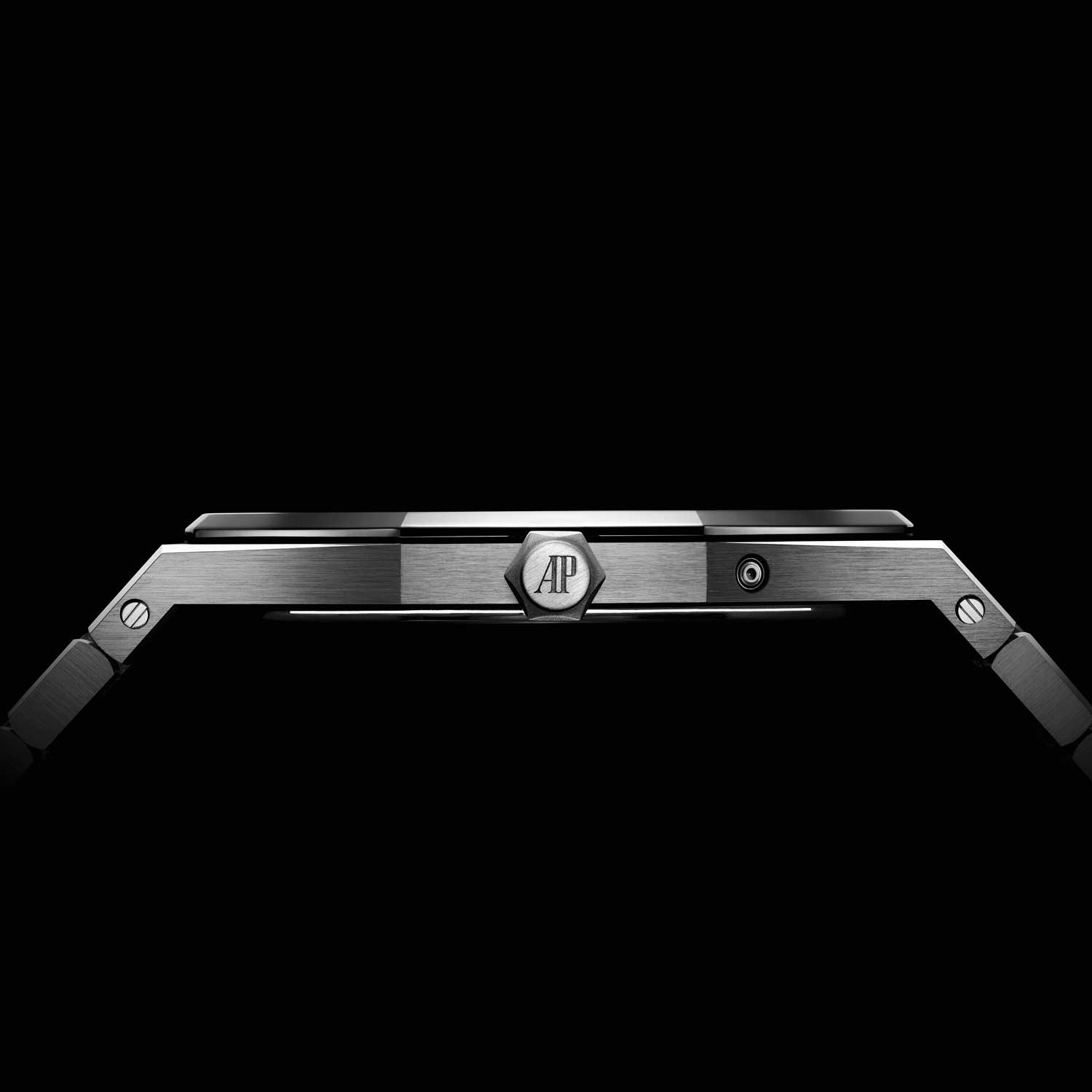
The ultra-thin calibre is achieved by by embedding the calendar complication on the main plate

The self-winding cal. 5133 was based on the cal. 2120, thus incorporating a “hanging” barrel visible on the caseback

The 2017 Royal Oak Perpetual Calendar ref. 26579 in black ceramic

The 2015 ref. 26574 with a central week-of-the-year indicator
Keeper of the Flame
The relevance of Campbell’s heroic monomyth does not end with Audemars Piguet’s watches. Over the last quarter century, the individual that has ably drove the commercial success of the legendary Royal Oak is a man whose life story also fits the heroic monomyth. That is Audemars Piguet’s CEO François-Henry Bennahmias. A professional golfer who was ranked 25th in France, he joined AP in 1994 at the age of 30 and three years later, was the brand’s head of operations in Singapore. By 1999, he was Audemars Piguet’s CEO in North America, where he was the driving force behind the Royal Oak’s massive surge in popularity and relevance. He converted the greatest popular culture luminaries like Jay-Z and LeBron James into fiercely loyal customers, and was responsible for the Royal Oak’s appearance in cult television programs like Entourage. In 2012, on the 40th anniversary of the Royal Oak, he took up the mantle as the global leader of the brand. Within six years he grew revenue for Audemars Piguet from 550 million Swiss francs to over a billion Swiss francs per annum. In 2021, the brand’s performance was incendiary, reaching 1.58 billion Swiss francs.

Reinforcing the evergreen appeal of the Royal Oak are some of the most beloved models executed with green dials — a platinum Royal Oak “Jumbo” Extra-Thin, a Royal Oak Selfwinding Chronograph in yellow gold, as well as a trio of Selfwinding Flying Tourbillon models launched in 2021
Looking back at the half century of the Royal Oak’s history it has shapeshifted and transformed, evolved and been the source of bold revolutionary strides while somehow never losing its core value as the most significant act of shaped art to grace the history of watchmaking. When he first sketched out those initial brushstrokes of a design that would become the most significant timepiece in human history, Gérald Genta could not have imagined how the Royal Oak could be extrapolated into so many distinct and heroic guises. He could not have known brilliant designers such as Jacqueline Dimier, Emmanuel Gueit, Claude Emmenegger and Octavio Garcia would build on the foundation that he laid to create a tower edifice of horological magnificence that has compelled the Royal Oak to ascend into the realm of immortality. He would not know that extraordinary leaders from Georges Golay, Georges-Henri Meylan, Stephen Urquhart and François-Henry Bennhamias would each play a vital role in increasing the cultural relevance of the Royal Oak so that it is permanently engrained in the world’s collective consciousness. The Royal Oak when it was launched in 1972, was the hero the world needed. It came to us in uncertain times, filled with strife and challenges and brought light and leadership so much so that by the end of that decade almost every major haute de gamme watch brand had followed in its path. For 50 years it came back to us again and again clad in enthralling new guises often at the cutting edge of the cultural zeitgeist. Over that half century the Royal Oak has uplifted an entire industry and won our hearts with its sheer unremitting courage and originality.
Happy anniversary, Royal Oak. Thank you for being the hero for us when we needed you most.










